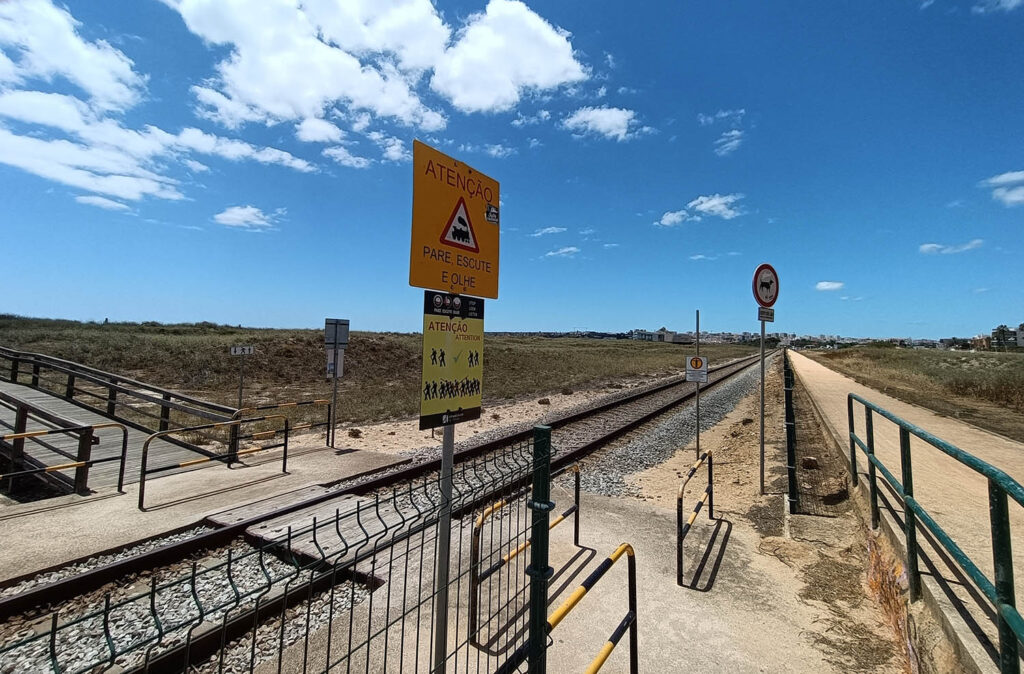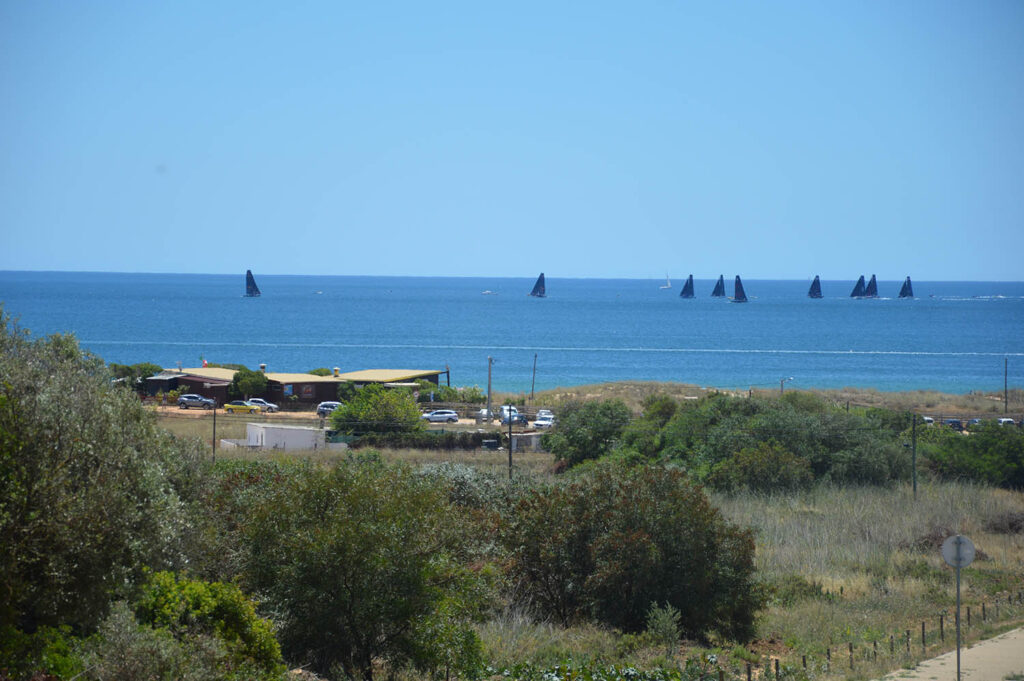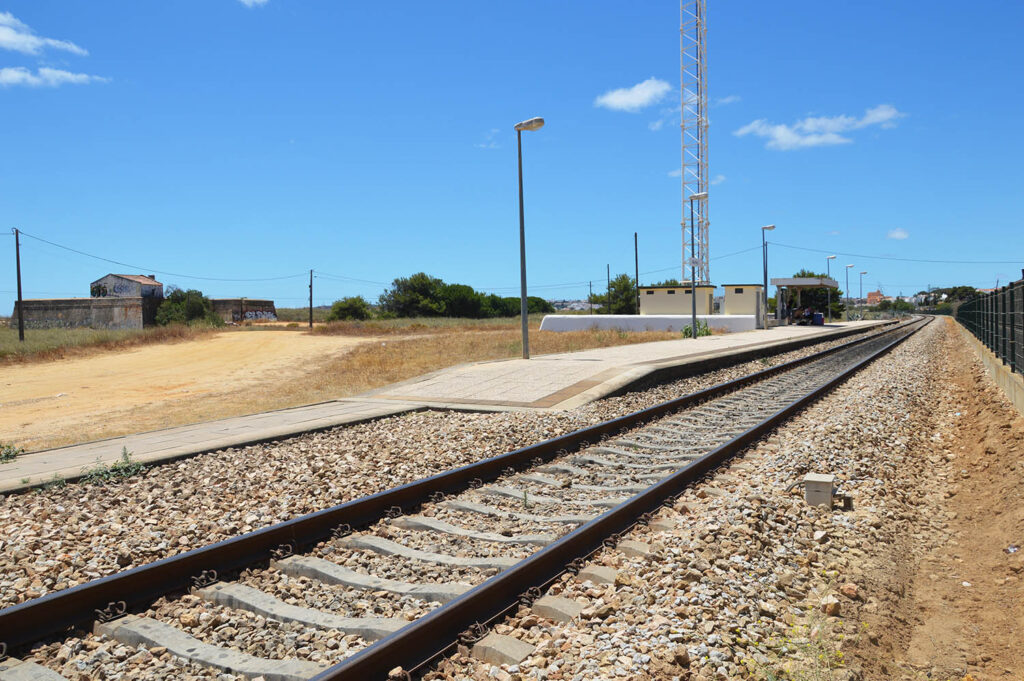The Municipality of Lagos and the company Infraestruturas de Portugal (IP) are already studying, together, a project to «try to mitigate the negative visual and landscape impact» that the electrification of the Algarve Line will cause, in the section of about six kilometers along Meia Praia.
Hugo Pereira, president of that autarchy, revealed to the Sul Informação, on the sidelines of the signing of the consignment contract for the electrification of the Tunes/Lagos section of the Algarve Line, which took place on Friday, the 24th, in this last city, that what is at stake is the impact of the placement of about a hundred catenary poles «with seven meters high», along the line that borders that beach.
«Although we understand that electrification has to be done, from the beginning, in the discussion phase of the Environmental Impact Study, we expressed some disagreement and our reservations in relation to these catenaries, which will have a strong negative visual impact».
In his speech at the official session, before Pedro Nuno Santos, Minister of Infrastructure, the mayor Hugo Pereira had already expressed the need, in the electrification work on the Meia Praia seafront, to impose a «personalized approach» for this sea front. . And that is what is now being discussed between the Câmara de Lagos and IP.
«We did the preliminary study, which has already been sent to the IP, it is being evaluated to see if they agree or not with our proposal. I think that, in July or August, we can have the preliminary study approved to move on to the execution project and try to see between the parties, Chamber and IP, the best way to minimize the negative visual impact».

Carlos Gonçalves, vice president of Infraestruturas de Portugal, explained, for his part, the need to use catenaries in the electrification of a railway line: «trains, in order to have electricity, it has to come from somewhere and, therefore, the way that is used all over the world in railway systems of this kind is to have a catenary pole about five and a half meters high, every 50 meters».
This official defended, in his statements to the Sul Informação, that these «posts and the contact wire above» «end up having little expression in the landscape, but obviously they are a new element».
However, Carlos Gonçalves added that it is «a technology that exists practically throughout the country, it exists in Lisbon, in front of the monumental area of the Jerónimos Monastery, it exists in the Douro - or will exist in the Douro -, it exists in Minho and exists in all countries that have this system».
Despite this, IP is receptive to the ideas of the Câmara de Lagos, and both entities are «working to prepare a plan for environmental requalification in the surroundings, to reduce, even so, the impact on the landscape that we believe is not very great".
«Obviously Meia Praia is an absolutely extraordinary place and therefore we want to contribute to preserving its image», guaranteed the vice president of IP.

Lifting the tip of the veil on the project for Meia Praia, the mayor of Lagos explained to our newspaper that «the idea is to intervene in the entire terrain that confines and is parallel to the train line».
«It is an area that, roughly speaking, works as a parking lot for access to the beach and instead of using traditional parking, what is being planned is to try to raise, in some points, the level of the land, to create some urban and landscape component to try to minimize and disguise the huge extension of catenaries that will have to be placed for electrification to be carried out on the sea front», added Hugo Pereira.
The intervention, he revealed, “could be around 5 million euros”.
And who pays? “Right now, this is the discussion that exists. There is openness on the part of IP to support all or part of the value», with the possibility of resorting to European funds. «Between us and them, you can apply together with the electrification contract, or later, in an application to be made by us».
The vice-president of Infrastructure in Portugal also agrees that «we must find a way, between the two entities, to execute what makes sense to execute».
In the Environmental Impact Declaration (DIA), “this intervention is foreseen” to minimize the visual and scenic impacts of the electrified line in Meia Praia. Therefore, Carlos Gonçalves assumed, «what comes directly from the requalification intervention, IP will assume. If there are other works that make sense to do, obviously we will have to articulate them with the Municipality».




















Comments